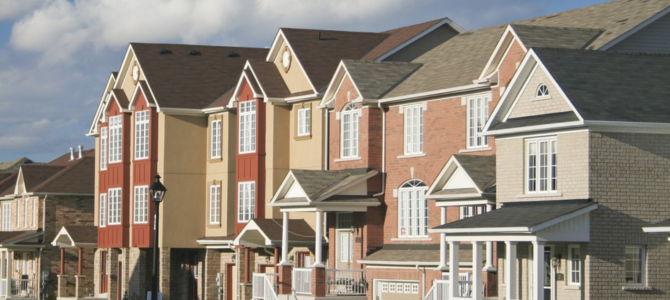
A recently released poll by the Georgetown Institute of Politics and Public Service had predictably bad news about civil society in 2019: “A majority of Americans believe political, racial, and class divisions are getting worse.” More disturbingly, “the average voter believes the U.S. is two-thirds of the way to the edge of a civil war.” While Democrats, Republicans, and independents blamed differing sources for the tension, all groups agreed on one: social media.
Indeed, the rise of online community and the erosion of real-life, local community have been favorite themes of lament on the right in recent years. In an insightful essay recently published here at The Federalist, the author confesses that Facebook “is what constitutes much of my community nowadays. I don’t know my neighbors … in spite of the fact that I work in buildings filled with people and live in a teeming city, I am often lonely.”
He goes on to argue that isolation has deepened our social and political divisions:
The decline of the community has led to a decline in our collective sense of principle and purpose. In a community, the deeply shared and intertwined histories of its people provide a presupposition of benevolence among its constituents. In other words, in a community, we know that those who differ from us are fundamentally good and decent people.
Of course, identifying a problem is always a simpler task than solving it — especially a problem that afflicts a whole society. But just as those of us who decry the broken American family must begin simply by loving our own spouses and children, it’s time for conservatives to stop merely lamenting the loss of community and start being intentional about loving our neighbors.
Since my husband and I married nearly 20 years ago, it’s been a project of ours to engage the people living nearest us. We’ve had varying degrees of success. As in any relationship, a friendship between neighbors takes two. Still, I am happy to report that even in 21st-century America, we’ve been able to build real local community, lasting friendships, and a healthy constituency from whom we might borrow a cup of sugar at a moment’s notice. Here are five things we’ve learned to do along the way.
1. Make Time
The most necessary — and most difficult — prerequisite for building local community is making a little space in your life. It’s become far too common for American families to fill every waking hour with activities, clubs, sports, and lessons. Gone are the days when kids roamed the neighborhood on bikes or played baseball on the corner lot; now they’re in far-flung cycling clubs or organized sports teams, with mom and dad as chauffeur.
If you have children, it’s unrealistic to expect to eschew all of this. Extracurricular activities can enrich your kids’ lives, and they often build community relationships. However, it takes a conscious and countercultural effort to avoid being sucked into the vortex of overcommitment. Saying “yes” to every good thing will overload your schedule and reduce your home to a mere waystation between appointments. To state the obvious, it’s hard to engage with your neighbors if you’re never home.
In this respect, stay-at-home parents can play a key role as “glue” for a neighborhood. As a homeschooling, work-from-home mother, my schedule is full but flexible. When my elderly neighbor has heart arrhythmia, I can drop everything and drive her to the hospital. When the single dad down the street needs someone to pick up his daughter from school, I can handle it.
This degree of flexibility won’t be possible for everyone, but it’s important to realize that authentic relationships require an investment of time. If we’re serious about building community, we need to be intentional about creating space for it.
2. Go Outside
I distinctly remember a day last year when I was driving my kids home from lessons (yes, I do it too), and we passed through a low-income community near the railroad tracks. On the front porch of one of these humble homes, I saw several generations sitting together: dad, grandfather, and child. They were all listening to Grandpa, who was strumming a guitar. It was such a rare and lovely vignette from another time that I was tempted to pull over and shake Grandpa’s hand.
Outdoor spaces are the communal spaces in a town or neighborhood. I’m convinced that second only to Americans’ overcommitted schedules, our propensity for staying indoors is a community-killer. It’s no accident that snowstorms are often great relationship-builders between neighbors, as weather forces people first to stay home and then to go outside.
Simply showing your face outdoors once in a while helps establish your presence and make you known to those around you, especially if you take the next step and strike up conversations when opportunities arise. If you aren’t ready to spend an old-fashioned evening sitting on the front porch, you could make it a regular habit to take walks around the neighborhood. Do some gardening in the front yard. Force the kids off their devices and onto their bikes. It’s healthy for your mind and body, as well as for your community.
3. Reach Out (the Holidays Are Perfect)
After you’ve laid the foundation of simply being around, it’s time to consider getting really bold and knocking on your neighbor’s door. The easiest time to do this is early in the relationship, shortly after one of you has moved in. Wherever we’ve lived, I’ve made it a practice to greet new neighbors with a plate of homemade cookies or a loaf of bread, along with a welcome card that includes our names and phone number.
If you missed the new-neighbor window, the second-easiest time for knocking on doors is during the holiday season. Although I have some discomfort with the gruesomeness of Halloween, I’ve allowed my kids to participate in trick-or-treating simply because it’s the only time Americans widely visit each other’s front porches. We’ve resisted the temptation to do trunk-or-treats or shuttle into a big development, choosing instead to stay in our own small town among our neighbors.
Christmas is another excellent, socially acceptable time for taking a plate of cookies to the folks next door. Many of my closest neighbor relationships started with Christmas cookies. If you don’t bake, try a tin of store-bought popcorn. It’s not about the offering so much as the gesture, and people notice.
4. Join a Local House of Worship
If your goal is to build local community ties, attending church close to home makes more of a difference than you’d think. I learned this the hard way: For years, my family drove 30 minutes to church across a state line.
Although the drive didn’t seem overly long in today’s commuter lifestyle, our church simply wasn’t focused on reaching the community and culture where we lived. Furthermore, there was no overlap between our church and community relationships.
When we finally made the switch to a church in our own county, 10 minutes away, everything changed. Suddenly, it became easy to drive the neighbors’ kids to church day camp, invite the folks next door to the Christmas Eve service, or tell the single dad down the street about Wednesday night supper.
A good church is a source of strength and help to the surrounding community, and its members connect their neighbors to its resources. Since we started attending church locally, three different families on our street have started attending with us (and two were newly baptized). There’s nothing better for a sense of belonging than worshiping alongside your neighbors.
5. Look for the Unlikely Relationships
When my kids were small, my closest neighbor relationship was with another young mom. She lived a block away, our kids were the same ages, and, like me, she was an avid reader with an interest in politics and culture. She was also a vegetarian, an environmentalist, and a feminist, with a car covered in Democrat bumper stickers.
Over the course of several years, we spent untold hours walking the town together, taking our kids on outings, and sharing home-cooked meals in each other’s kitchens. Our differences in politics and religion served as a springboard for many fascinating discussions. We often debated, found more points of agreement than you’d expect, and never once allowed our differences to turn into anger or disrespect. (She eventually moved away, but we remain friends — and she remains a staunch liberal — to this day.)
Another unlikely friendship I’ve formed is on our current street, with a crusty, 70-year-old immigrant from Eastern Europe. When we first moved here, several of our new neighbors warned us about the European lady and her legendary temper. However, all it took was one small gesture of kindness for us to melt the ice and reveal her true nature: fiercely loyal, overwhelmingly generous, and ready to love our kids as an adopted grandmother.
In my experience, people everywhere — yes, even in modern America — are hungry for genuine connection. Sometimes it’s the least-likely seeming candidates for friendship, in fact, who are the hungriest. It’s precisely these relationships across divides of politics, religion, age, and lifestyle which will bring strength back to our local communities and, by extension, our nation. You won’t be able to single-handedly change the culture of America, but changing the culture of your neighborhood is well within reach. It’s a place to start.








